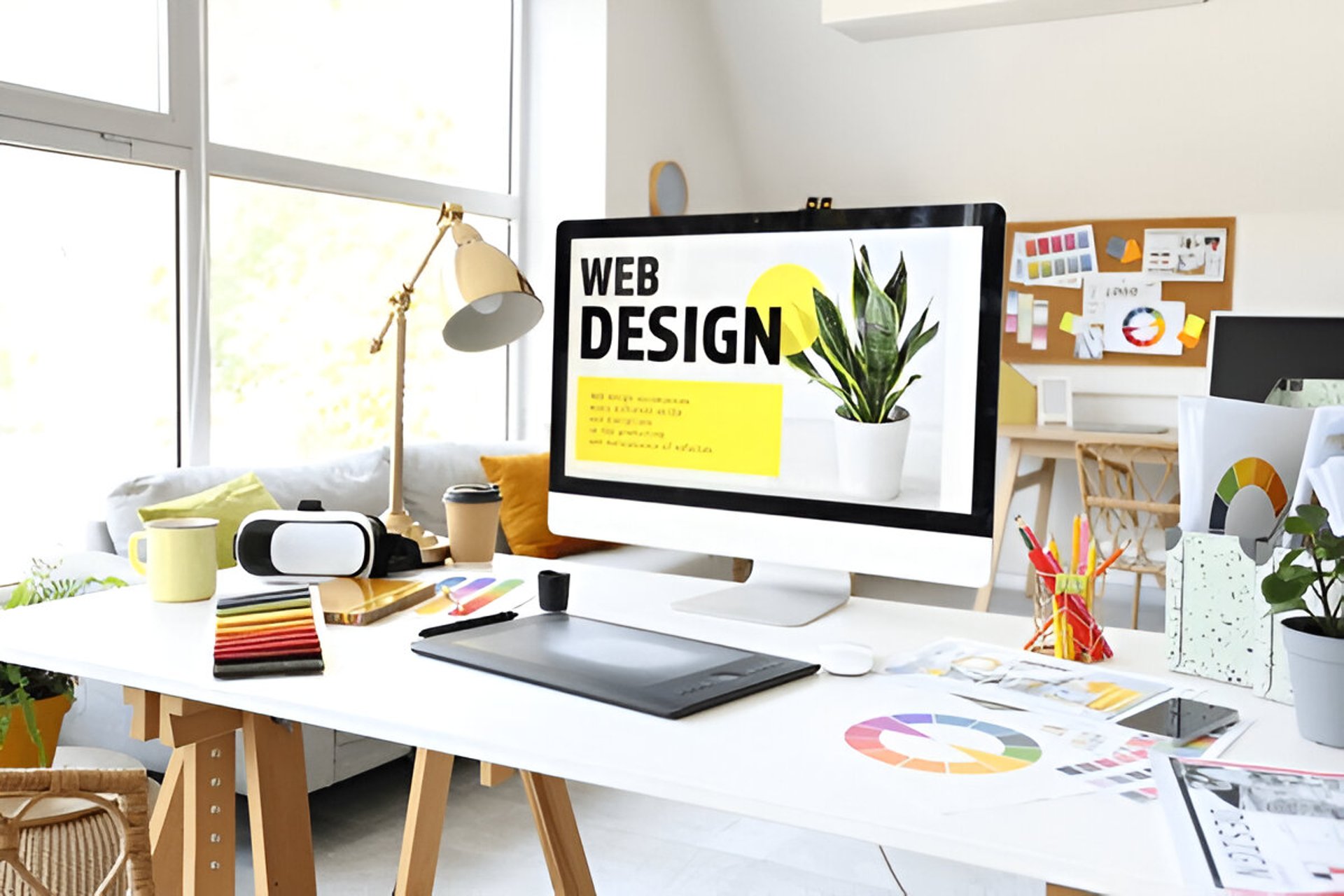Why a Good Website Design Is Essential for Small Businesses?
WEBSITE DESIGN
Admin
7/23/20253 min read

In an era where digital presence defines business visibility, having a well-designed website is no longer optional for small businesses—it’s a strategic necessity. With increasing competition and shrinking attention spans, your website often serves as the first impression, the primary engagement tool, and sometimes even the final sales touchpoint.
This blog dives into why a good website design is crucial for small businesses and how it directly influences online success, brand perception, and customer behavior.
🌟 First Impressions Are Instant and Lasting
Visitors judge a website’s credibility based on design within milliseconds. A poorly designed site sends the wrong message—suggesting inexperience or neglect. Conversely, a clean, modern layout communicates professionalism and reliability.
Impact on Trust: A professional look makes users more likely to trust your business.
Brand Perception: Cohesive colors, fonts, and layout reinforce brand identity.
SEO Benefit: Lower bounce rates from engaging designs improve search rankings.
SEO Insight: Ensure your homepage loads quickly and is easy to navigate. Google's algorithms consider dwell time and user engagement when ranking pages.
📱 Mobile-Friendly Design Captures Wider Audience
Over 70% of global internet traffic now comes from mobile devices. If your website isn’t optimized for smartphones and tablets, you’re missing out on a major share of your audience.
Responsive design adapts to different screen sizes and maintains functionality across devices. It’s not just about looking good—it’s about being accessible.
User Experience: Seamless navigation builds engagement and reduces frustration.
Conversions: A mobile-optimized layout ensures users can complete actions easily.
SEO Advantage: Google uses mobile-first indexing, prioritizing mobile-friendly sites in search results.
SEO Insight: Use Google's Mobile-Friendly Test to check your site's responsiveness and fix any issues that could impact your rankings.
🧭 User Experience Drives Retention and Sales
Website design directly affects how users interact with content. A well-organized site with intuitive navigation helps visitors find what they need without effort, which increases engagement and leads to more conversions.
Call-to-Actions (CTAs): Strategically placed buttons guide users toward desired actions.
Minimal Clutter: Simplicity enhances clarity and boosts engagement.
Navigation Structure: Logical page layout makes exploring effortless.
SEO Insight: A good UX results in longer visit durations and increased page views—two metrics search engines use to evaluate content quality.
🎨 Design Is Integral to Branding and Identity
Your website serves as an online representation of your business personality. A consistent design helps users remember and recognize your brand, which is vital for repeat business and word-of-mouth referrals.
Visual Branding: Logos, color schemes, and typography unify your business image.
Storytelling: Design can reflect your brand values and mission effectively.
Trust Building: Cohesive visuals create a sense of legitimacy.
SEO Insight: Optimize image tags and meta descriptions with brand-specific keywords to enhance visibility on search engines.
📈 Higher Conversion Rates Through Visual Hierarchy
A good design guides the user’s eye using contrast, alignment, spacing, and typography. This visual hierarchy increases the likelihood of users performing actions—whether it's contacting your business, signing up, or making a purchase.
Focused Attention: Elements like bold headlines and white space help direct focus.
Accessibility: Clear layout benefits users of all demographics, including those with disabilities.
Actionable Design: Forms, buttons, and links should be easy to locate and interact with.
SEO Insight: Use structured data to help search engines understand key page elements like contact forms and reviews.
🔗 Seamless Integration With Marketing Tools
Small businesses often run lean operations, making efficient digital marketing essential. A well-designed website integrates seamlessly with email campaigns, social media, and analytics platforms, enabling smarter decisions and better engagement.
Lead Capture Forms: Essential for growing mailing lists and nurturing prospects.
Landing Pages: Custom pages for campaigns improve conversion and tracking.
CRM & ERP Integration: Supports automation and data-driven strategies.
SEO Insight: Fast load speeds and easy navigation influence ad quality scores and organic search visibility alike.
💰 A Cost-Effective Sales Channel
Unlike physical storefronts, websites operate 24/7, offering information, collecting inquiries, and enabling transactions round-the-clock. This constant accessibility increases sales potential without recurring costs.
E-Commerce Capability: Even simple websites can host products and accept payments.
Automated Support: FAQ pages, chatbots, and contact forms reduce manual interactions.
Global Reach: Attract customers beyond your immediate geographic location.
SEO Insight: Regularly update product pages with fresh keywords, reviews, and schema markup to maintain relevance.
🚀 Future Scalability Supports Business Growth
As your small business expands, your website should evolve with it. Good design ensures scalability—whether you're adding a blog, launching a new service, or integrating advanced tools.
Modular Design: Easier to expand without redesigning the entire site.
Technical Infrastructure: Supports plugins and third-party integrations.
Security: SSL certificates and user protection build customer confidence.
SEO Insight: Scalable architecture and clean URLs help maintain long-term site performance and ranking.
Final Thought
A good website design isn't just about aesthetics—it's a powerful growth engine. From boosting search visibility to enhancing user experience and establishing trust, thoughtful design gives small businesses a competitive edge in the crowded digital arena.
If you’re investing time and resources into marketing, make sure your website isn’t sabotaging your efforts. A polished, optimized design could be the deciding factor between a casual visitor and a loyal customer.
Ready to upgrade your online presence? Start with design—it’s where impressions, interactions, and conversions begin.
